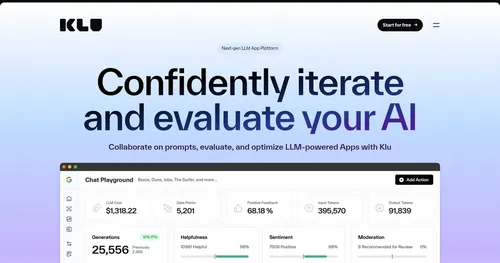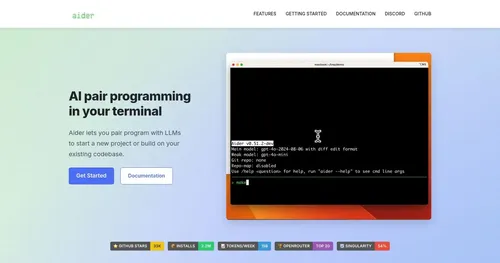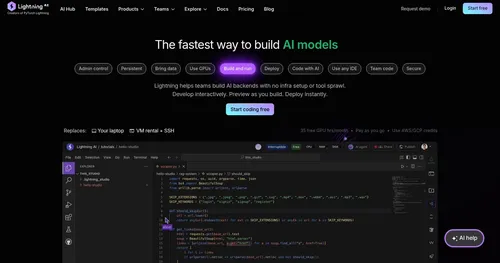Wit.ai by Meta

Wit.ai is a free, open-source natural language processing platform that enables developers to build conversational interfaces by converting speech and text into structured data. Acquired by Meta in 2015, it supports applications like chatbots and voice assistants. Developers use its web console to train models, defining intents and entities to interpret user input. It supports multiple languages and integrates with various platforms via APIs and SDKs.
The platform’s core features include intent detection, entity recognition, and context management. Intent detection identifies what users want, like “order food” in a query. Entity recognition extracts details, such as “pizza” or “New York,” while context management tracks conversation history for coherent responses. Wit.ai provides SDKs for Node.js, Python, and Ruby, among others, and its RESTful API allows integration with web, mobile, and IoT devices. The platform learns from user interactions, improving over time with more training data.
Compared to Dialogflow and Amazon Lex, Wit.ai is notable for its free access. Dialogflow offers similar NLP capabilities but restricts some features to paid plans. Amazon Lex integrates tightly with AWS, which may limit flexibility for non-AWS users. Wit.ai’s open-source libraries and active community provide robust support, though its documentation can be dense for beginners.
Users may appreciate the free pricing and ease of integration. The ability to create custom entities offers flexibility, and multilingual support broadens its appeal. However, training the model requires significant effort to achieve accuracy, especially for complex queries. Some developers express concerns about data privacy due to Meta’s ownership, as noted in recent X posts. The platform may struggle with nuanced or ambiguous inputs without extensive training.
To use Wit.ai effectively, begin with simple intents and entities. Use the official documentation for setup guidance and test with varied inputs to refine performance. Join community forums for practical advice and monitor privacy considerations for your project.
Video Overview ▶️
What are the key features? ⭐
- Speech Recognition: Converts spoken language into text for voice-driven apps.
- Intent Detection: Identifies user goals, like “book a flight,” from input.
- Entity Recognition: Extracts specific details, such as locations or names, from text.
- Context Management: Tracks conversation history for coherent responses.
- Multilingual Support: Processes multiple languages for broader accessibility.
Who is it for? 🤔
Examples of what you can use it for 💭
- Mobile App Developer: Builds a chatbot to handle user queries in a travel app.
- Smart Home Engineer: Integrates voice control for devices like thermostats.
- E-commerce Owner: Creates a conversational interface for product searches.
- Healthcare Startup: Develops a voice assistant for patient scheduling.
- Customer Service Manager: Automates responses to common client inquiries.
Pros & Cons ⚖️
- Free to use for all features.
- Supports multiple languages.
- Easy integration with APIs.
- Steep learning curve for beginners.
- Requires extensive training data.
FAQs 💬
Related tools ↙️
-
phospho Control robots and train AI models with an open-source toolkit
-
 Klu
Helping people build smart apps with the help of AI
Klu
Helping people build smart apps with the help of AI
-
 Aider
An AI-powered coding assistant designed that streamline developers' workflow from the terminal
Aider
An AI-powered coding assistant designed that streamline developers' workflow from the terminal
-
Memex Turns ideas into software using natural language, no coding required
-
Refact.ai Automates coding tasks with context-aware AI assistance
-
 Lightning AI
The platform to build ML models & Lightning Apps that "glue" together your favorite ML tools
Lightning AI
The platform to build ML models & Lightning Apps that "glue" together your favorite ML tools

